INVERSUS – The Sensitive Machine
Inversus is the sensitive machine that makes no sense. An artistic installation exploring interaction with common objects.
Why should a lamp be used only to illuminate?
Lamps, speakers or fans are usually used as output interfaces, what would happen if we turn the output into an input interface? Inversus explores this inversion by using Lamps as light sensors, speakers as pressure sensors and fans as blowing sensors. The main concept of Inversus is to invert the meaning of transmission devices into reception devices. A sensitive machine that capture human interaction to produce sound and visual kinetics. A performing instrument that gives life to a mechanic flower that spins when someone blows into the machine producing an animated shadow like in shadow puppetry. There is also a virtual marionette inside the machine that reacts to the pressure of the pads; this marionette is rigged with bones that are mapped to the pads that make them squash and stretch producing animation. Virtual and real animation is generated based on human interaction. Made from a washing machine this audiovisual instrument makes the sense of things changing by spinning a colorful wheel.
There are 3 different types of interaction
1. by touching 4 color pads that produce sounds in the same manner as when playing a drum (pressure sensitive), the virtual marionette reacts to this interaction by moving the arms and legs
2. by passing with the hands above 3 leds which produce sound like an organ (sound keeps playing until the hand moves away from the led)
3. by blowing a fan the frequency of the sound changes and the flower starts to spin.
Inversus ( Transmission -> Reception)
This is a 3D picture simulating the appearance of the installation

Inversus – interactive installation 3D simulation
Picture from “CHEIA” exhibition at Póvoa de Varzim – Portugal (from 5th till 31th October)
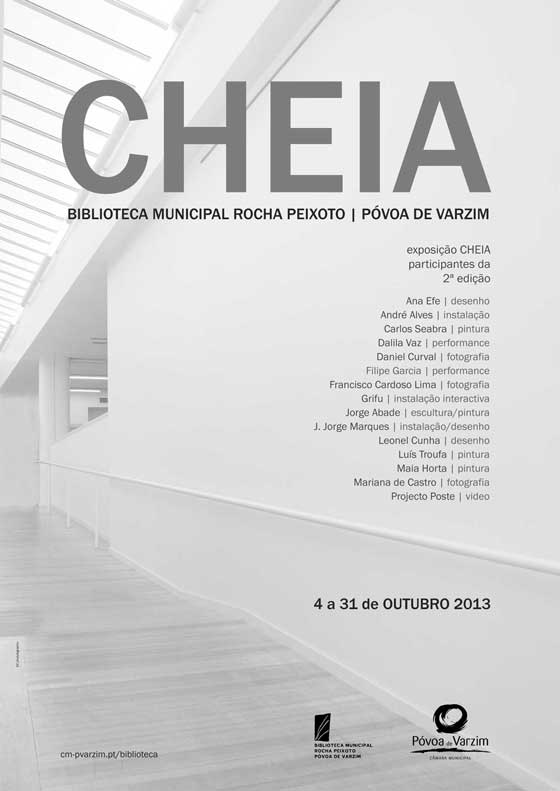
Cheia 2013 Exhibition
detail picture from the interactive installation at “CHEIA”
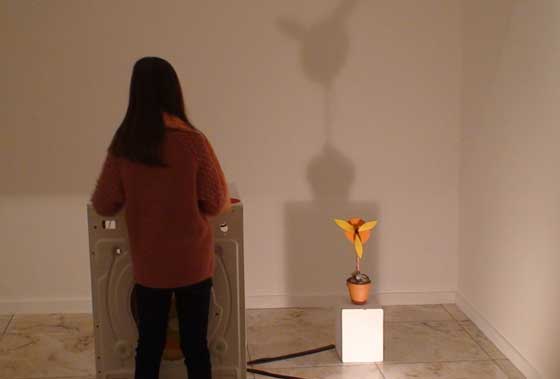
Interacting with Inversus
THE BEGINNING …
This project uses an Arduino Duemilnove and the fowling hardware:
– 4 piezos (from speakers used as pressure sensors);
– 3 yellow leds (used as light sensors);
– 3 green leds (to output the reaction of the light sensors);
– Computer Fan 12v (used as input interface);
– DC motor (used as the flower);
– Computer with windows;
…and the fowling software:
– Arduino;
– Ableton Live (for sound);
– Hairless Midi-serial (bridge for virtual-midi);
– Pure Data (remap midi messages to OSC and control windows);
– Animata (for performance animation with a virtual marionette);
The fowling sketch shows how Inversus is connected. Basically there are 3 different inputs:
– Piezo inputs using analog arduino inputs;
– Led inputs using digital arduino pins;
– DC motor using one analog arduino input;
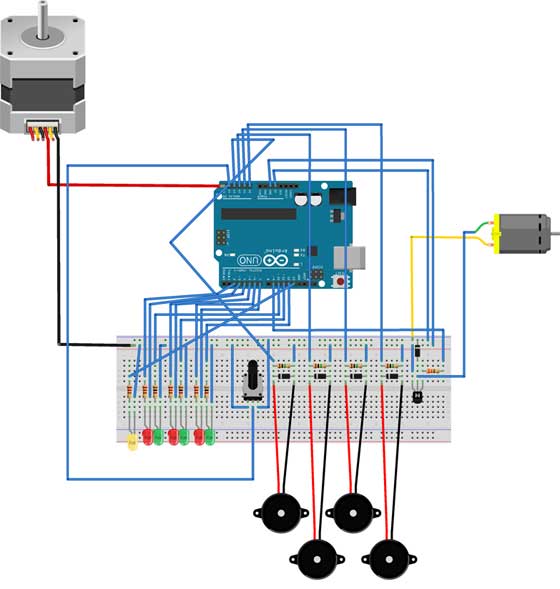
sketching Inversus
But all started with …. speakers ….. or ….. PIEZOS
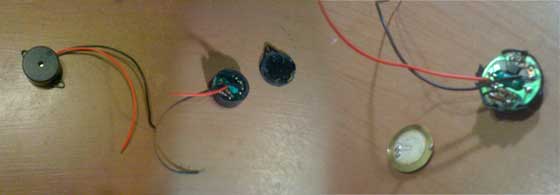
The piezoelectric is a small device that measures pressure by converting it to an electrical charge.
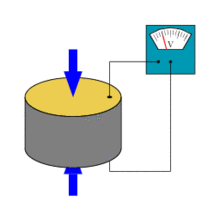
Then….four piezos were attached to CD´s which where used as a surface to capture the pressure.
I was inspired with the Ardrumo project which i adapt.
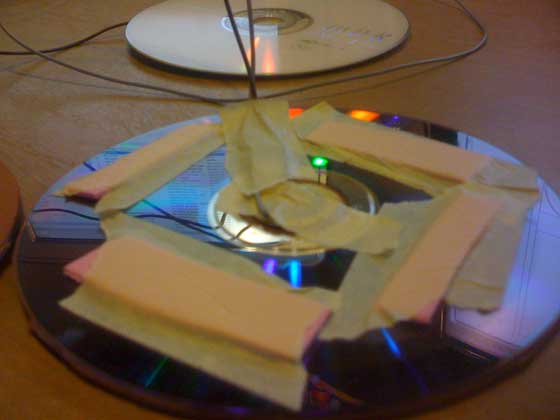
Piezzo attached to cd´s with some color plastic material at the top

TouchPads with piezos
The prototyping phase
I started prototyping each input at a time, connecting just the PC fan and study the results

After doing all the prototyping and sketching ….
- Prototyping Inversus
I searched for the shell and the console. I found the perfect shell in a very nice place at Porto called “Farrapeiros”, they sell any kind of object in 2nd hand. I found an incredible washing machine shell and bought it with only 2.5€.

Then, i draw the console with the washing machine measures
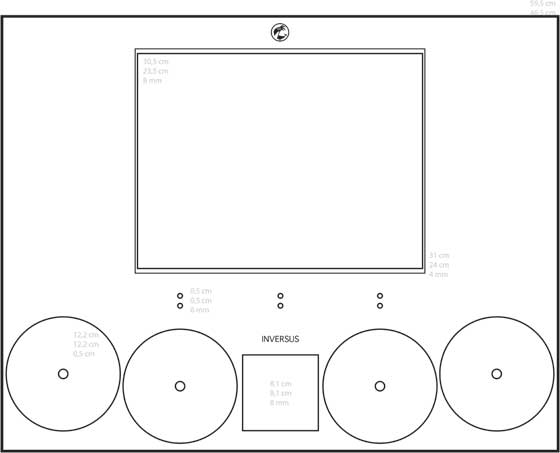
then… i bought a piece of PVC sheet and print the sketch with a CNC machine.
A special thanks to my great friend and master puppeteer Marcelo Lafantona for helping me with the CNC.
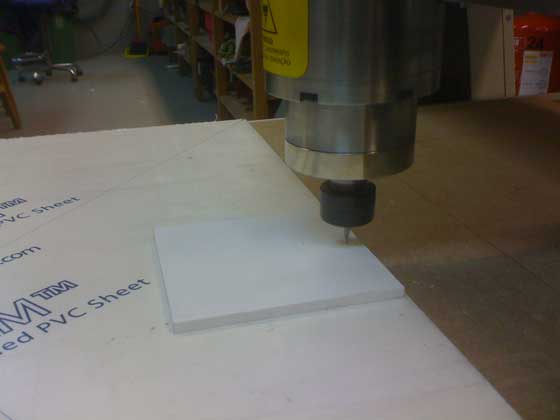
Finally, i´ve put everything together and set up the installation

….and…. turn it on
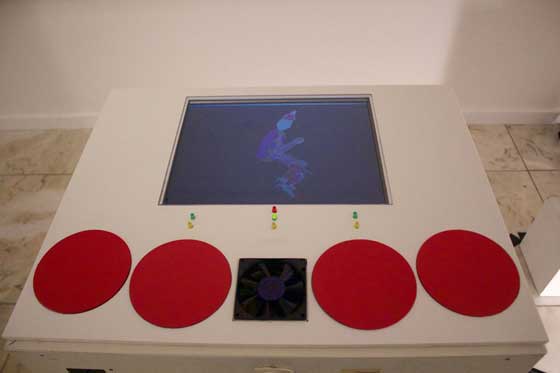
I had some troubleshooting when converting things from Mac to Windows and a very annoying issue to gather all the installation applications startup at just one button….
Soon i´ll put the arduino and pure data sketch´s for download.
References:
Arduino Workshop: http://www.thebox.myzen.co.uk/Workshop/LED_Sensing.html



